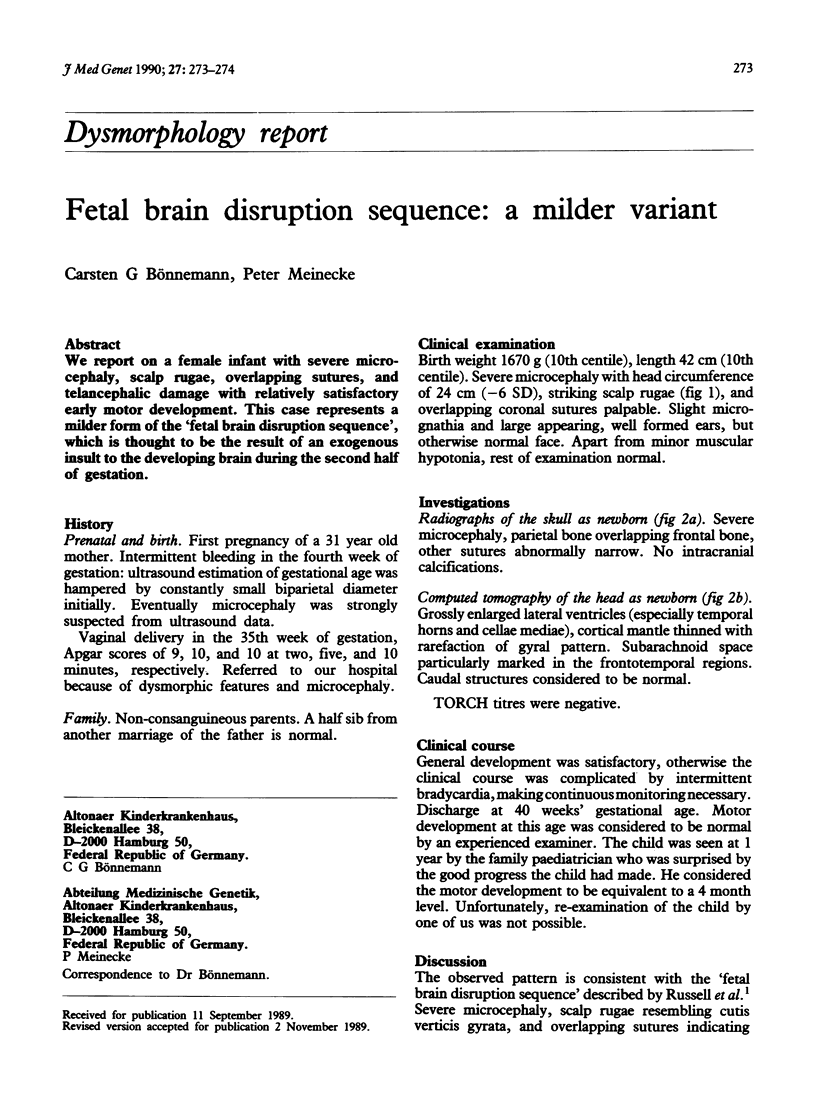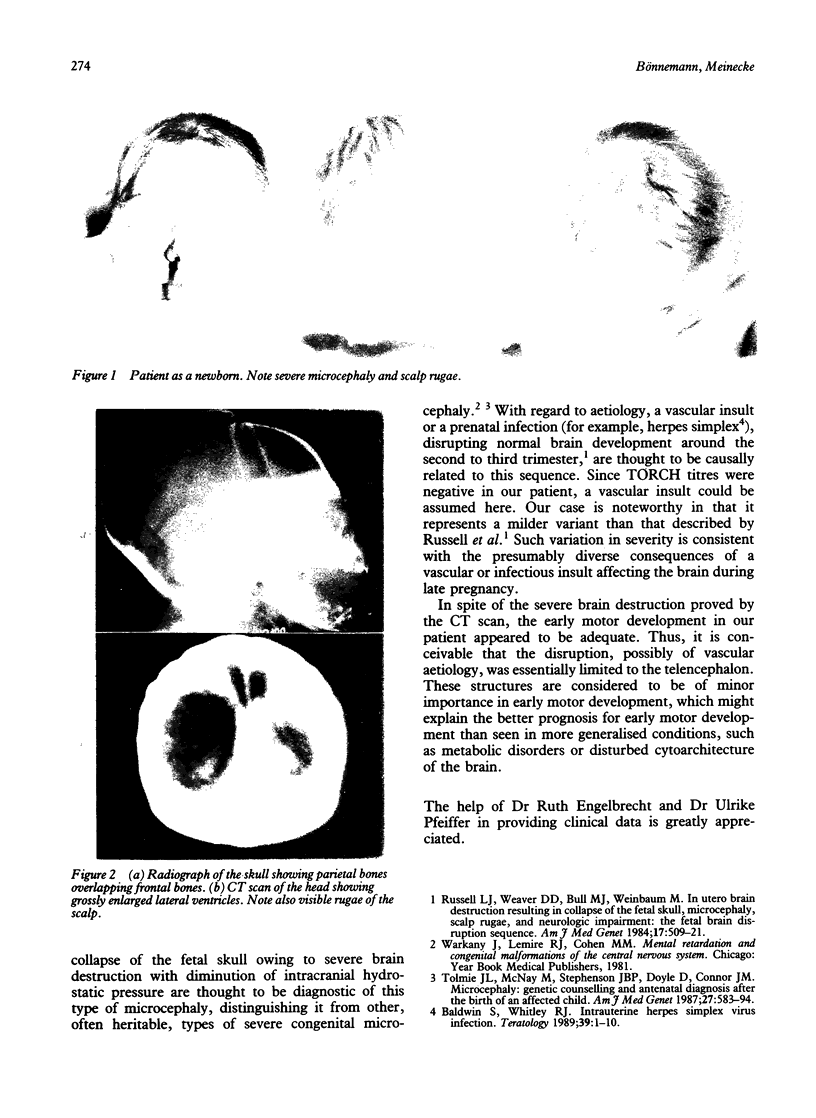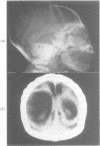Abstract
We report on a female infant with severe microcephaly, scalp rugae, overlapping sutures, and telancephalic damage with relatively satisfactory early motor development. This case represents a milder form of the 'fetal brain disruption sequence', which is thought to be the result of an exogenous insult to the developing brain during the second half of gestation.
Full text
PDF

Images in this article
Selected References
These references are in PubMed. This may not be the complete list of references from this article.
- Baldwin S., Whitley R. J. Intrauterine herpes simplex virus infection. Teratology. 1989 Jan;39(1):1–10. doi: 10.1002/tera.1420390102. [DOI] [PubMed] [Google Scholar]
- Russell L. J., Weaver D. D., Bull M. J., Weinbaum M. In utero brain destruction resulting in collapse of the fetal skull, microcephaly, scalp rugae, and neurologic impairment: the fetal brain disruption sequence. Am J Med Genet. 1984 Feb;17(2):509–521. doi: 10.1002/ajmg.1320170213. [DOI] [PubMed] [Google Scholar]
- Tolmie J. L., McNay M., Stephenson J. B., Doyle D., Connor J. M. Microcephaly: genetic counselling and antenatal diagnosis after the birth of an affected child. Am J Med Genet. 1987 Jul;27(3):583–594. doi: 10.1002/ajmg.1320270311. [DOI] [PubMed] [Google Scholar]




